
Lamp Shades: The parts of a lamp shade
Search
See also our main lamp shade article for more lamp shade topics.
Get to know your lamp shade
Lamp shades are constructed from a few main parts

It begins with a lightweight metal frame, which loosely defines the overall structure of the lampshade. The frame includes some way to attach the shade to a lamp or fixture. We call this attachment the fitter, ie how the shade is fitted/attached to the lamp. The fitter is built into the lamp shade itself.
Then one or more materials are wrapped around the frame to cover it. This could include a single layer such as fabric, paper or linen. Or it could also include a separate interior "liner", designed to prevent more light from passing through the shade material, or to reflect more light inwardly. The material is fastened around the top and bottom of the shade, sometimes finished with a trim.
The finished lampshade then must be attached to the lamp or fixture. The fixture will include a way for the shade to be attached, which must match the type of fitter on the shade.
For example to attach a "spider fitter", which has arms that reach out from the center like a spider, a lamp harp is needed. A harp is like a loop of metal rods which rises up around the bulb and meets at the top, creating a platform for the shade to sit on. A screw thread appears at the top which the spider fitter washer can be positioned on, and then finally a lamp shade finial screws on top to hold it in place.
In other designs such as those with an UNO fitter, or a down-bridge fitter, parts of the lamp shade's top framework itself may bend and go far down and meet below the bulb, without the use of a separate harp.
Some lamp shades also allow the bulb to point downwards, attaching the shade above the hanging bulb. There are also special clip-on fitters designed for mini chandelier lamp shades, where the shade includes a simple springy metal clip which literally clips onto the light bulb itself. Since these shades are very small, the light bulb is strong enough to support the weight and keep the shade in place.
The lamp shade frame

A lamp shade begins with a basic structure called a frame. The frame is a kind of framework, usually made from strong metal, but remaining thin enough as to not be too heavy. The frame also has to allow light to reach the shade, so it does not block the light and instead tries to be as minimally noticeable as possible.
Bare in mind also that when the light is switched on, any solid metal frame inside the lamp shade might become more visible. It may create shadows which block light from reaching the lamp shade surface. So the aim is to keep the frame as streamlined and minimal as possible so as not to interfere with the overall look of the light output.
Lamp shade frame structure
The frame forms a shape and structure. Typically the top and bottom of the frame are like two hoops or rings, whose shape depends on what type of shade it is. For example a square or rectangular shade would feature two squares or rectangles.
The top and bottom rims are then held apart by vertical rods. The rods connect to the bottom rim and the top rim, giving the shade its height. Note that if the lamp shade is a bell shape, where the sides of the shade material curve inwards, the vertical rods of the lamp shade frame also have to bend inwards so as not to interfere with this design.
How the frame attaches to the lamp

Another important part of the frame is providing a way to attach the lampshade to the lamp or fixture. Typically this is via a spider-like fitter across the top of the frame, or an uno fitter.
Both types of fitter will feature rods which attach to the top rim of the lamp shade frame and then move in toward the center, joining either above or below where the light bulb will be.
The rods will come together in the middle, connected to a small washer-like ring or similar, which can then be attached to the lamp or light fixture. This might then be screwed into place or attached with a finial.
When complete, the lamp shade frame forms the overall shape of the lamp shade, ready to be covered in some kind of shade material. More complex frames are possible such as those for oval and rectangular shades, cut-corner shades, octagonal shades, shades with galleries and other unusual designs.
Tiltable lamp shade frames
Table lamps and floor lamps sometimes feature a type of frame that includes a hinge. Instead of the spider fitter simple extending into the middle of the lamp shade at the top, it is interrupted by an extra rod that reaches down inside the lamp, alongside the bulb.
This downward rod features a pivoting hinge at the bottom. A second rod on the other side of the hinge joint rises back up to the spider fitter, which then continues on to the central washer.
The hinge joint makes it possible for the lamp shade to now be tilted, like it is leaning to one side. Light from the bottom of the shade can therefore be adjusted and aimed to some degree.
For example, if you wanted to read a book, and wanted more of the light to reach over to the side of a bed or chair, you could tilt the shade to aim the light. Light emitting from the bottom of the shade would now shine over to one side.
The only downside of this feature is that when the lamp shade is tilted, the side material of the lampshade is now more "above" the light bulb, instead of to the side. Heat from the bulb rises upwards which can cause the material to heat up.
This can be somewhat more of a fire hazard, as well as causing discoloration in the shade. This may be why this type of lamp shade has become much less popular in modern lamps, as well as being part of a movement to reduce costs.
Collapsible lamp shade frames
Another type of lamp shade frame sometimes seen is the collapsible shade. This features the same top and bottom rims, but the vertical rods can be temporarily disconnected. When the lamp shade is received, the rods can be moved into position, "inflating" the lamp shade to its fully expanded shape and holding it in position.
This allows the shade to be folded down and flattened, which is beneficial for shipping or travel. Ideally the lamp shade material will be flexible and resistant to creases, so that when unfolded and the shade is fully expanded, there won't be any noticeable marks or damage. While this provides benefits for moving the shade, shipping it to you and so on, once the shade is installed it's job is done.
The lamp shade fitter

A lampshade needs a way to be connected to the lamp or light fixture. The lamp shade can't just be an outer shell with a covering material. It has to reach in to the central location where the light bulb is, or near to it.
This is achieved with the part of the lampshade we call the fitter. It's how the lampshade "fits" or attaches to the lamp, and the fitter is integrated as part of the lamp shade frame itself.
Rods of metal typically branch out from the top rim of the shade frame and move towards the center. They meet there and connect to a large washer or similar device designed to mount onto the lamp base or onto a harp.
A harp is a pair of metal rods which attach below the bulb in a saddle and rise up around the bulb meeting at the top with a screw thread. The lamp shade sits on the thread and is fastened by a finial.
In other cases the fitter may reach down and attach directly below the bulb, as in the case of an uno fitter. Or there may be a smaller clip-on style fitter which is a lightweight spring-loaded clip, which lightly clips directly onto the sides of the light bulb itself.
The lamp shade cover material

A lamp shade frame without a cover wouldn't serve much of a purpose. The aim is to diffuse, shield and reflect the light in order to "shade" your eyes.
Once the frame is constructed, it is covered with some kind of material. Popular materials include various fabrics, linen, paper, and more.
One of the main functions of the cover is to diffuse light so that glare from the light bulb is reduced. The harsh light needs to be spread around or blocked to some degree so that when you look at the lamp your eyes are not dazzled.
There are varying degrees of how much the light is diffused or blocked, depending on the material used, how thick it is, and its color.
Bear in mind also that the color of the shade material will filter the light. If the material is thin enough to allow some light to pass through it, the shade itself will become "lit up" and glow.
But also light passing through it will be filtered by the color of the shade material. If for example the shade is red, light passing through will block the color frequencies of blue and green, allowing only red light to make it to the other side.
Therefore the light passing through the red shade will be a "red light" and will make the room look redder. This will have an effect on the color rendering index (CRI) of the light and affect the colors of objects in the room.
For this reason, you may want to consider a) whether light will be passing through the shade itself and affect the light color in the room and b) what color that light will be and how it will influence the colors of objects.
For example, a white shade or a more neutral color such as beige or off-white, will allow more frequencies of light to pass through and allow the full color spectrum of the light bulb to light the room. A whiter shade will allow a whiter light to pass through into the room.
On the other hand a colored shade such as a red lampshade will tint the light red, producing a warm glow but also potentially making it harder to see the natural colors of objects. For example a blue object will appear "dark" and murky if lit only by a red light, because the red light lacks blue frequencies. For proper color representation (color rendering), you need a whiter light.
The lamp shade lining

Rather than trying to choose the right color lamp shade in order to have the right color of light, you can opt for a separately lined lampshade. The aim is to line the lamp shade with a material that's different to the outer surface, designed to block and reflect light.
This means adding a second cover on the inside of the shade. This inner shade lining usually serves two purposes, 1) to stop more of the light from passing through the lamp shade cover, and 2) to reflect more light causing it to pass out the top and bottom of the shade.
Types of lamp shade linings

Typical lamp shade linings will be a pure white, or could be a reflective silver, or sometimes a gold lining. The gold lining will similarly color the light and make it warmer, since it reflects warmer frequencies and blocks others. White and silver will output a whiter light.
In order to reflect more light, the lining has to block more light from passing through the shade. This has the side effect of causing the shade material itself to become less illuminated, so the shade itself may not appear to "glow" as much.
With the outer cover of the lamp shade no longer affecting the light color, you are free to choose any color or design for the appearance of the lamp shade. The outer color of the shade is seen as decorative, and this allows you greater flexibility in choosing the lampshade color.
For example a red shade with a lining will not cause the light to turn red, because the light is reflected by the inside of the shade. So you can enjoy the appearance of a red shade and also the visual benefits of whiter light.
A lined lampshade will emit a more focused or stronger-seeming light out of the bottom and top of the shade, whereas an unlined single-surface lampshade will be less focused and more diffused in its light.
The lining helps to focus the light and divert more light out through the shade openings, making it appear brighter. Another option is of course to opt for brighter light bulbs, but always be sure to keep within the limits of the maximum wattage that your lamp or light fixture is rated for.
Lamp shade finishing touches, finials and decorations
Once the main lamp shade frame is built and covered with material with an optional lining, the shade is more or less complete.
However, the lamp shade can also be decorated with additional accessories or finishing touches. This can include decorative trims around the top and bottom of the shade, added tassels around the bottom, and potentially extra decorations which are attached to the shade. These can include charms and jewels which hang down from the shade.
Lamp shade finials

Another important element to mention is the lamp finial. A finial is a small decorative object with a screw thread inside. It screws onto the post that the lamp shade sits on, in the case of a spider fitter
The finial holds the lamp shade in place, and provides an extra opportunity for a finishing touch and an extra element of decoration. Lamp finials come in a wide range of styles including sculpted brass ornaments, turned wood, as well as whimsical characters, seasonal designs and even Swarovski crystals.
Since it's easy to switch them out, having a few different finials in place at different times of the year can be a fun and cute way to accessorize your lamp.
Types of lamp shade fitters

There are several types of fitters for lamp shades. Each is designed to be attached to a lamp in a specific way. This also means that the lamp or light fixture itself has to be designed to work with that type of fitter.
You can't for example use a spider fitter when the fixture needs the shade to clip onto the bulb, and you can't use an uno fitter that attaches below the bulb where a spider fitter is needed above the bulb.
The design of the lamp or light fixture will determine the type of fitter that your lampshade needs to be compatible.
Lamp shade spider fitters

The spider fitter most often features rods which extend inward from the top rim of the lamp shade frame. Only 2 rods are really needed, which will meet at the middle. But for stability and support, 3 or 4 rods are common.
When they meet at the center, the rods are attached to a flat ring of metal. This ring has a hole in the middle. The ring can then sit on top of a post of some kind, such as that of a lampshade harp.
A harp is a pair of rods which rise up around the bulb from below the socket, meeting at the top, finished with a screw-threaded post. The lamp shade fitter sits on top of this post and is then fastened in place with a finial.
Lamp shade threaded uno fitters
An UNO fitter removes the need for a separate harp. The rods from the top of the shade instead extend downward from the shade frame itself, and meet below the bulb. This can then sit on the lamp base and the light bulb will be screwed in above it. In effect, the harp is integrated into the frame of the lamp shade.
Typically an uno fitter comes in a plain washer style or a with a screw thread. For a threaded uno fitter, the washer is a little larger and thicker, enough for there to be a screw thread added on the inside. This means the whole lamp shade is literally "screwed onto" the lamp base, by aligning the screw threads and turning the shade. Other uno fitters may or may not feature a screw thread design.
Lamp shade downbridge uno fitters
Another form of uno fitter turns the fitter upside down, allowing the shade to support a downward-facing light bulb. This can be useful, for example, in a pendant light fixture where the bulb needs to point downward and hangs from above.
The uno fitter therefore doesn't need to reach down below the bulb because it needs to attach above the bulb. In this case, the fitter extends out from the top rim of the shade and meets in the middle, in a similar fashion to a spider fitter. But it may then be fastened to the fixture "above" the bulb, with the light bulb either holding it in place or with the use of a screw thread onto the bulb socket.
Lamp shade clip-on fitters for regular bulbs

Finally, for use on mini chandelier shades, which are used on multi-light chandeliers, not only it is unnecessary to have a regular fitter due to the small size of the shade, the shade is also very lightweight due to its size.
There is very little room for a harp to be used. So instead, some thinner rods will attach to the top rim of the shade frame and will then be formed into the shape of a "clip".
The clip-on fitter has two sides, designed to grasp onto the light bulb itself from opposite sides. The metal in the clip gives it a certain amount of spring-loaded strength so that it can grip the bulb enough to stay in position, but lightly so that it does not break the bulb.
This clip is strong enough and light-weight enough that the mini lamp shade can stay positioned over the light bulb without needing any additional support.
Lamp shade clip-on fitters for candelabra bulbs

Clip-on lamp shades come in a few different clip forms, such as to support clipping onto a regular "round" light bulb like an Edison bulb, or a more elongated clip suitable for "candle" style candelabra bulbs.
When the bulb needs to be replaced, the lamp shade's clip-on frame can be gently pried apart and removed. The new lamp shade can then re-attached to the new bulb by gently clipping it over the bulb.
Lamp shade bowl notched fitters

Variants of the spider fitter sometimes include notches or ridged areas along the top bars. These are designed to support the use of a reflector bowl.
A glass "bowl" with a hole in the bottom can be fitted inside the lampshade to reflect and diffuse more light. This bowl sits below the light bulb and surrounds teh bulb area.
The spider fitter can then sit on top of the upper rim of this bowl, and the notches in the fitter bars help to keep the bowl in place and the lampshade centered.
While reflector bowls are far less popular than they used to be, they can sometimes be more often found in classical floor lamps.
Lamp shade drop

The "drop" of a lamp shade is what we call the distance between the top of the lamp shade rim, and the place where it meets or rests on the lamp. This means that the fitter "drops down" in height below the top of the shade.
In the case of a spider fitter, which is usually fairly close to the top of the shade frame, this drop might be small - perhaps only half an inch or so. But in other cases the drop can be significant.
The reason why this is important is because it affects the vertical position of the lamp shade in relation to the lamp base. Ideally you'll want the lamp shade to cover the hardware, ie the lamp socket, the light switch, the harp etc.
If the drop on the shade is significant, it will raise up the shade and potentially expose the less-attractive parts of the lamp base around the bottom, as well as potentially exposing the bulb which produces more glare.
Lamp shades may also feature a small drop so that, when viewed from the side, it's less obvious that there is a fitter in use. This also provides a small amount of room for a small finial to be used without it protruding too far outside the top of the lamp shade.
While the drop on most lampshades is fairly small, if you are buying a taller lamp shade it is something you need to be aware of. Particularly for example in the case of a tall cylinder shade, it's very likely that the lampshade features a significant drop of at least a few if not several inches.
An appropriate size of lamp shade harp may be needed to rise up high enough to meet the lamp shade fitter, for proper placement. In general, the drop that's built into the lamp shade frame has been chosen to work with most common positions of lamp shades so that the shade will be roughly centered around the bulb.
Replacing the lampshade harp

If the shade proves to be too high up on the lamp base, and shorter harp can be purchased to lower it down. If the lamp shade proves to be too far down the lamp base, a larger harp can be purchased to raise it up.
Some measurements of your lamp and proposed shade made be needed to estimate where the shade will sit, based on its drop in relation to the harp fitter, and whether this means you'll need a new harp or not.
In the case of other types of fitters such as uno fitters, it's likely that the size of the uno "drop" has been designed to be appropriate for the height of the shade and the typical size of the lamp socket/bulb etc.
It is also practically impossible to adjust the height because the uno fitter is part of the lampshade frame and doesn't sit on top of an adjustable harp. But in the case of spider-fitter shades the height is more easily altered when needed.
Lamp shade risers

Instead of or in addition to a new harp, a shade riser can be used, which is a small extension rod which screws on top of the screw-threaded post that the shade sits on.
This can "rise up" the vertical position of the lampshade. The rods are typically short, 1-2 inches in height, and more than one can be used if needed. A cleaner solution is to use the appropriate sized harp. These work with spider fitters which rely on a harp, where the harp has a screw thread on top.
What materials are lamp shades made of?
Lampshades can be covered with a variety of materials, each with unique properties and appearance, ranging from fabrics to silks to paper and more. They can even be made from glass and metal.
Cotton Fabric Lamp Shades

Cotton is one of the most commonly used fabrics for lamp shades due to its versatility and soft texture. It can be easily dyed, printed, or embroidered, making it ideal for creating a variety of patterns and styles, from casual to sophisticated.
Cotton shades diffuse light well, producing a warm, inviting ambiance. However, over time, they tend to attract dust and may discolor with prolonged exposure to sunlight.
To maintain their appearance, they require regular cleaning, usually by gentle dusting or using a vacuum brush attachment. The soft cotton "hangs" gently and can also be used with curved bell shades.
Linen Fabric Lamp Shades
Linen is prized for its durability and natural texture, which gives lamp shades an elegant, organic look. It often has a slightly rougher weave than cotton, creating subtle variations in how light passes through, making it suitable for relaxed, modern, or coastal interiors.
Linen shades offer excellent light diffusion, producing a soft glow with a slightly muted tone. Although they are more resistant to wear than cotton, linen shades can wrinkle easily and may need occasional spot cleaning to maintain their appeal.
Silk Fabric Lamp Shades
Silk shades are synonymous with luxury, making them a popular choice for high-end or traditional decor. They provide a soft, romantic glow and complement formal spaces such as living rooms or bedrooms.
However, silk is delicate and requires careful handling. Silk can fade with exposure to sunlight and is prone to tearing if not handled properly.
Cleaning silk shades can be tricky; it is usually recommended to dust them lightly or use a professional cleaning service.
Chintz Fabric Lamp Shades
Chintz is a glazed cotton fabric with a smooth, shiny finish that gives lamp shades a polished appearance. Its reflective surface can subtly enhance light output, making it an attractive option for decorative lamps and fixtures.
Chintz is often used in vintage or classic-style lamps, adding a hint of sophistication. However, the glossy coating can make the material less breathable, and it may yellow over time.
Chintz shades require careful dusting to maintain their sheen.
Washi Paper Lamp Shades
Washi paper, handcrafted from natural fibers such as mulberry bark, is known for its lightweight, delicate texture. These shades are often used in minimalist or Japanese-style lighting, where they lend a calming, ethereal glow to interiors.
Washi shades are fragile and prone to tearing, so they are best suited for low-traffic areas. Cleaning must be done with a soft brush or gentle dusting to avoid damage.
Parchment Paper Lamp Shades
Parchment paper shades offer a rustic, antique look, often used in vintage or cottage-style settings. Their slightly opaque texture creates a warm, subdued glow that adds coziness to a room.
While parchment is more durable than regular paper, it remains flammable, so proper bulb wattage must be observed to prevent overheating. These shades can be cleaned with a soft cloth or gentle dusting.
PVC Plastic Lamp Shade Linings

PVC (a type of plastic) is a popular material for the inner lining of fabric lamp shades, providing structure and durability. It is lightweight, resistant to moisture, and less prone to tearing than paper or fabric alone.
PVC can withstand heat reasonably well, but exposure to direct sunlight over long periods may cause it to yellow or become brittle. Cleaning PVC-lined shades is straightforward, typically requiring just a wipe with a damp cloth.
Acrylic Lamp Shades
Acrylic shades are modern, lightweight, and shatter-resistant, making them a practical option for contemporary settings. They diffuse light evenly, creating a clean, bright atmosphere.
Acrylic is also versatile. It can be molded into different shapes and tinted with various colors. Over time, however, soft acrylic can scratch or develop a dull surface, so cleaning should be done with non-abrasive cleaners and soft cloths.
Frosted Glass Lamp Shades
Frosted glass shades soften light, reducing glare and creating a gentle, ambient atmosphere. The frosting of the glass means it has a "frosty" look like a whitish, mostly opaque look which heavily diffuses the light.
They are popular in modern, industrial, or minimalist designs due to their sleek, understated look.
Frosted glass shades are also easy to clean, usually requiring only a wipe with a glass cleaner. However, they are fragile and can shatter if dropped, so careful handling is essential.
Stained Glass Tiffany Lamp Shades

Stained glass shades, often associated with Tiffany-style lamps, are known for their intricate designs and vibrant colors. They create striking visual effects when illuminated, casting colored light patterns in a room.
These shades are heavy and delicate, requiring careful placement and occasional cleaning with a soft cloth. Stained glass is ideal for artistic or vintage interiors where it can serve as a centerpiece.
Opal Glass Lamp Shades
Opal glass is opaque with a glossy finish, making it ideal for diffusing light evenly without revealing the bulb inside. These shades are common in contemporary or minimalist designs, adding elegance without drawing too much attention.
Opal glass is durable but can show fingerprints or dust, so regular cleaning with a lint-free cloth is recommended to maintain its appearance.
Metal Lamp Shades (Brass, Copper, Steel etc)
Metal shades offer a bold, industrial look and are highly durable. Materials like brass, copper, or steel reflect light rather than diffuse it, directing light downward or outward in focused beams.
These shades are well-suited for task lighting or spaces where a vintage or industrial aesthetic is desired. Metal shades are easy to maintain and can be polished to maintain their shine, though they may develop patina over time, adding character.
Rattan, Bamboo and Leather Lamp Shades

Rattan and bamboo shades bring a touch of bohemian or tropical charm to a space. Their woven patterns allow light to filter through, creating interesting textures of light and shadow. Leather lends a heavier softer look.
These natural materials are lightweight and breathable but can be susceptible to moisture and fraying over time. They are best suited for indoor use and can be cleaned with a dry or slightly damp cloth.
Continue reading about lamp shades
Using lamp shades with light fixtures
How to attach a lamp shade to a lamp
How to measure lamp shades for a perfect fit
Matching a lamp shade to your lamp base
Lamp shade materials colors textures and patterns
Light bulb heat and lamp electrical safety tips
How to clean and repair lamp shades
How to create a custom DIY lamp shade
Explore Topics

Table of Contents
Lamp Shades: The parts of a lamp shadeGet to know your lamp shadeThe lamp shade frameThe lamp shade fitterThe lamp shade cover materialThe lamp shade liningLamp shade finishing touches, finials and decorationsTypes of lamp shade fittersLamp shade dropWhat materials are lamp shades made of?Continue reading about lamp shadesCommentsShopping Ideas
Trending
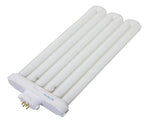

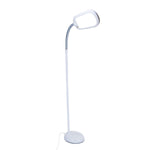
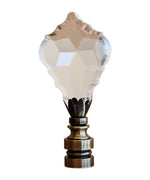



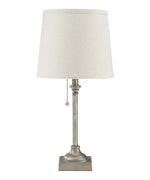
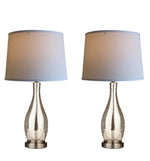

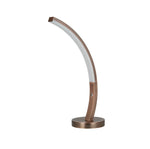

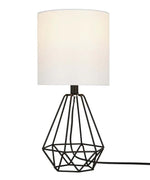
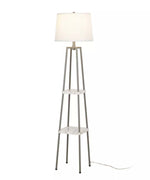


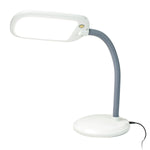










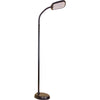



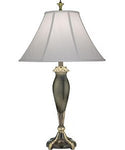

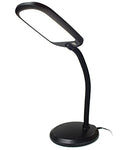


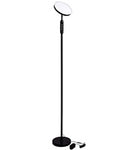
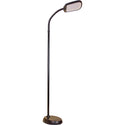
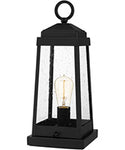
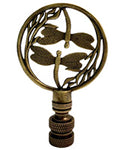
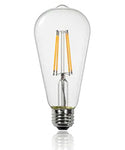
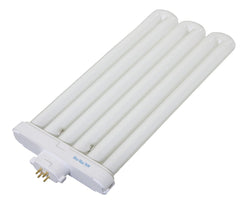
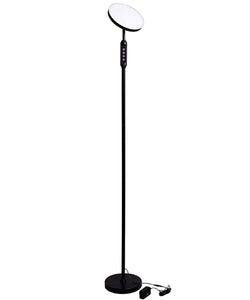
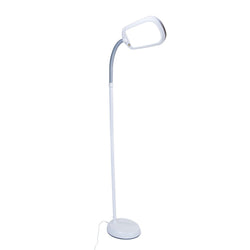
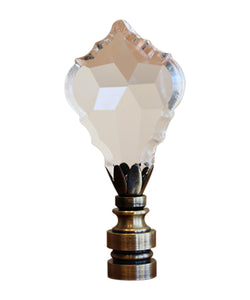
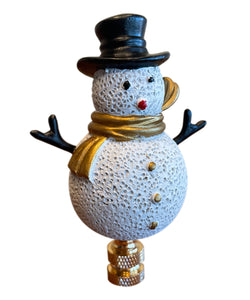
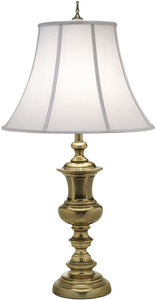
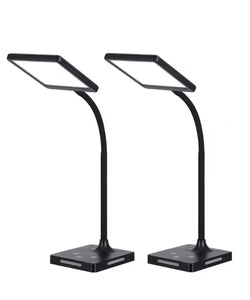




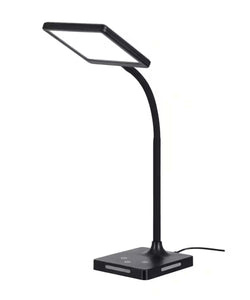
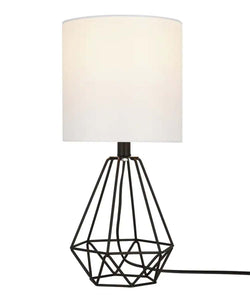
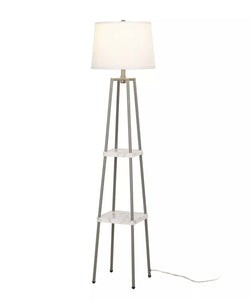






Comments